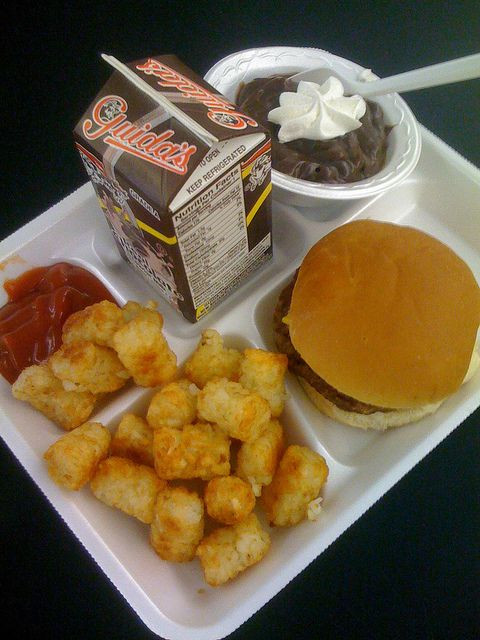Traditionally Schooled Students More Obese Than Home Schoolers; Are School Lunches To Blame?

Children who are home-schooled tend to be more fit than those who attend traditional schools, a recent study concluded. Although the study was conducted before the National School Lunch Program’s new, healthier meal pattern began in 2012, more schools are dropping the healthier lunches because of student disinterest and sales losses. The findings serve as a reminder that reverting back to unhealthier lunches could cause child obesity to rise again.
Childhood obesity rates in the U.S. have stabilized recently. Federal and state government initiatives to provide healthier lunches in and out of schools, as well as promote physical activity have led to healthier kids. But many students who eat at school have complained that they still felt hungry after eating. Some have brought their own food from home and others have gone to grocery stores to buy junk food — all of this has led to declining sales. Meanwhile, other schools have begun to incorporate finely textured beef, which critics have dubbed "pink slime," back into their foods in order to reduce costs while filling kids up.
Over 30 million kids eat school lunches every day. Researchers from the University of Colorado had initially believed that children who spent more time at home were more likely to gain weight. But their study found that traditionally schooled children were more likely to consume sugary, fattier foods during lunch, which lead to weight gain and obesity.
“Based on previous research, we went into this study thinking home schooled children would be heavier and less active than kids attending traditional schools. We found the opposite,” Michelle Cardel, Ph.D., the study’s lead author, told reporters.
Over the course of five years, Cardel and her team looked at dietary intake, physical activity, trunk fat, fat mass, and percent body fat in 47 home schooled children and 48 traditionally schooled children, ages 7-12. They found that traditionally schooled children ate more calories, sugar, sodium, potassium, and calcium, compared to kids schooled at home. They also consumed fewer fruits and vegetables, and correspondingly less fiber. Both groups showed similar levels of physical activity.
Childhood obesity has more than doubled in children and tripled in adolescents over the past 30 years. In 2010, more than 30 percent of adolescents were overweight or obese, according to the Centers for Disease Control and Prevention (CDC). These children risk developing diabetes, bone and joint problems, cardiovascular disease, and certain types of cancers.
Districts that will remain on the healthier lunch plans — only one percent is opting out — are trying new approaches to satisfy children and convince them to eat healthier. In San Francisco, for example, the Board of Education gave students a new dining experience, in which elementary school students ate family style, and in stages. For middle school students, lunches were served from mobile carts in a “grab-n-go” style. High school students were given the choice of pre-ordering their lunch through a mobile app. These designs taught kids what they were eating through their own choices, while also reducing waste for the schools.
“When adults dine, we don’t just think about the food,” Orla O’Keeffe, executive director of policy and operations for the San Francisco Unified School District, told The New York Times. “The food is important, but so is what’s going on around it: the ambience, the service, the company. Why would we assume kids are any different?”
Source: Cardel M, Willig A, Dulin-Keita A, et al. Home-schooled children are thinner, leaner, and report better diets relative to traditionally schooled children. Obesity. 2013.
Published by Medicaldaily.com



























